Volker Schmidt
Statistical learning of structure-property relationships for transport in porous media, using hybrid AI modeling
Mar 27, 2025Abstract:The 3D microstructure of porous media, such as electrodes in lithium-ion batteries or fiber-based materials, significantly impacts the resulting macroscopic properties, including effective diffusivity or permeability. Consequently, quantitative structure-property relationships, which link structural descriptors of 3D microstructures such as porosity or geodesic tortuosity to effective transport properties, are crucial for further optimizing the performance of porous media. To overcome the limitations of 3D imaging, parametric stochastic 3D microstructure modeling is a powerful tool to generate many virtual but realistic structures at the cost of computer simulations. The present paper uses 90,000 virtually generated 3D microstructures of porous media derived from literature by systematically varying parameters of stochastic 3D microstructure models. Previously, this data set has been used to establish quantitative microstructure-property relationships. The present paper extends these findings by applying a hybrid AI framework to this data set. More precisely, symbolic regression, powered by deep neural networks, genetic algorithms, and graph attention networks, is used to derive precise and robust analytical equations. These equations model the relationships between structural descriptors and effective transport properties without requiring manual specification of the underlying functional relationship. By integrating AI with traditional computational methods, the hybrid AI framework not only generates predictive equations but also enhances conventional modeling approaches by capturing relationships influenced by specific microstructural features traditionally underrepresented. Thus, this paper significantly advances the predictive modeling capabilities in materials science, offering vital insights for designing and optimizing new materials with tailored transport properties.
Generative adversarial framework to calibrate excursion set models for the 3D morphology of all-solid-state battery cathodes
Mar 21, 2025Abstract:This paper presents a computational method for generating virtual 3D morphologies of functional materials using low-parametric stochastic geometry models, i.e., digital twins, calibrated with 2D microscopy images. These digital twins allow systematic parameter variations to simulate various morphologies, that can be deployed for virtual materials testing by means of spatially resolved numerical simulations of macroscopic properties. Generative adversarial networks (GANs) have gained popularity for calibrating models to generate realistic 3D morphologies. However, GANs often comprise of numerous uninterpretable parameters make systematic variation of morphologies for virtual materials testing challenging. In contrast, low-parametric stochastic geometry models (e.g., based on Gaussian random fields) enable targeted variation but may struggle to mimic complex morphologies. Combining GANs with advanced stochastic geometry models (e.g., excursion sets of more general random fields) addresses these limitations, allowing model calibration solely from 2D image data. This approach is demonstrated by generating a digital twin of all-solid-state battery (ASSB) cathodes. Since the digital twins are parametric, they support systematic exploration of structural scenarios and their macroscopic properties. The proposed method facilitates simulation studies for optimizing 3D morphologies, benefiting not only ASSB cathodes but also other materials with similar structures.
Generating multi-scale NMC particles with radial grain architectures using spatial stochastics and GANs
Jul 07, 2024



Abstract:Understanding structure-property relationships of Li-ion battery cathodes is crucial for optimizing rate-performance and cycle-life resilience. However, correlating the morphology of cathode particles, such as in NMC811, and their inner grain architecture with electrode performance is challenging, particularly, due to the significant length-scale difference between grain and particle sizes. Experimentally, it is currently not feasible to image such a high number of particles with full granular detail to achieve representivity. A second challenge is that sufficiently high-resolution 3D imaging techniques remain expensive and are sparsely available at research institutions. To address these challenges, a stereological generative adversarial network (GAN)-based model fitting approach is presented that can generate representative 3D information from 2D data, enabling characterization of materials in 3D using cost-effective 2D data. Once calibrated, this multi-scale model is able to rapidly generate virtual cathode particles that are statistically similar to experimental data, and thus is suitable for virtual characterization and materials testing through numerical simulations. A large dataset of simulated particles with inner grain architecture has been made publicly available.
Determination of droplet size from wide-angle light scattering image data using convolutional neural networks
Nov 03, 2023Abstract:Wide-angle light scattering (WALS) offers the possibility of a highly temporally and spatially resolved measurement of droplets in spray-based methods for nanoparticle synthesis. The size of these droplets is a critical variable affecting the final properties of synthesized materials such as hetero-aggregates. However, conventional methods for determining droplet sizes from WALS image data are labor-intensive and may introduce biases, particularly when applied to complex systems like spray flame synthesis (SFS). To address these challenges, we introduce a fully automatic machine learning-based approach that employs convolutional neural networks (CNNs) in order to streamline the droplet sizing process. This CNN-based methodology offers further advantages: it requires few manual labels and can utilize transfer learning, making it a promising alternative to conventional methods, specifically with respect to efficiency. To evaluate the performance of our machine learning models, we consider WALS data from an ethanol spray flame process at various heights above the burner surface (HABs), where the models are trained and cross-validated on a large dataset comprising nearly 35000 WALS images.
Using convolutional neural networks for stereological characterization of 3D hetero-aggregates based on synthetic STEM data
Oct 27, 2023Abstract:The structural characterization of hetero-aggregates in 3D is of great interest, e.g., for deriving process-structure or structure-property relationships. However, since 3D imaging techniques are often difficult to perform as well as time and cost intensive, a characterization of hetero-aggregates based on 2D image data is desirable, but often non-trivial. To overcome the issues of characterizing 3D structures from 2D measurements, a method is presented that relies on machine learning combined with methods of spatial stochastic modeling, where the latter are utilized for the generation of synthetic training data. This kind of training data has the advantage that time-consuming experiments for the synthesis of differently structured materials followed by their 3D imaging can be avoided. More precisely, a parametric stochastic 3D model is presented, from which a wide spectrum of virtual hetero-aggregates can be generated. Additionally, the virtual structures are passed to a physics-based simulation tool in order to generate virtual scanning transmission electron microscopy (STEM) images. The preset parameters of the 3D model together with the simulated STEM images serve as a database for the training of convolutional neural networks, which can be used to determine the parameters of the underlying 3D model and, consequently, to predict 3D structures of hetero-aggregates from 2D STEM images. Furthermore, an error analysis is performed to evaluate the prediction power of the trained neural networks with respect to structural descriptors, e.g. the hetero-coordination number.
Classification of FIB/SEM-tomography images for highly porous multiphase materials using random forest classifiers
Jul 28, 2022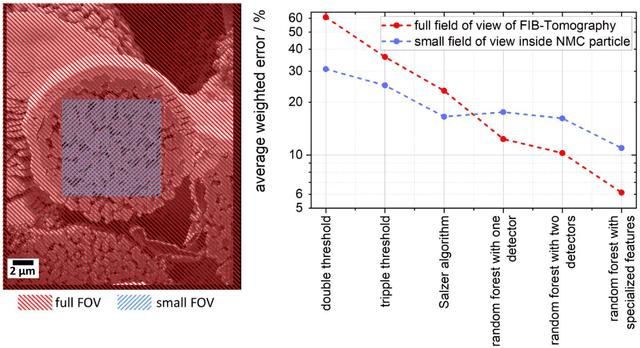
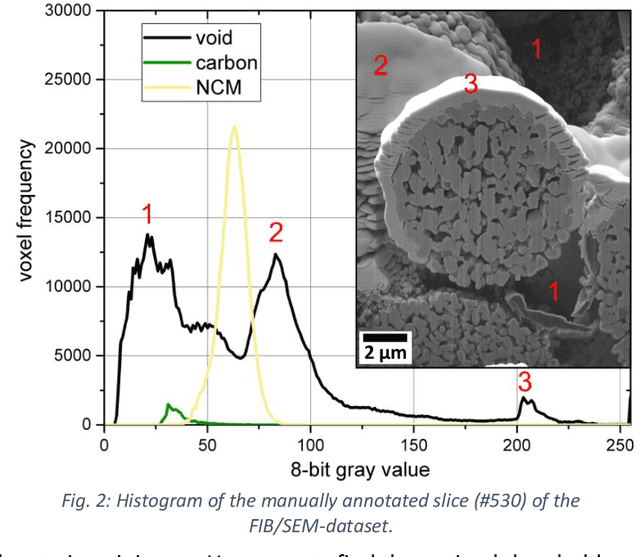
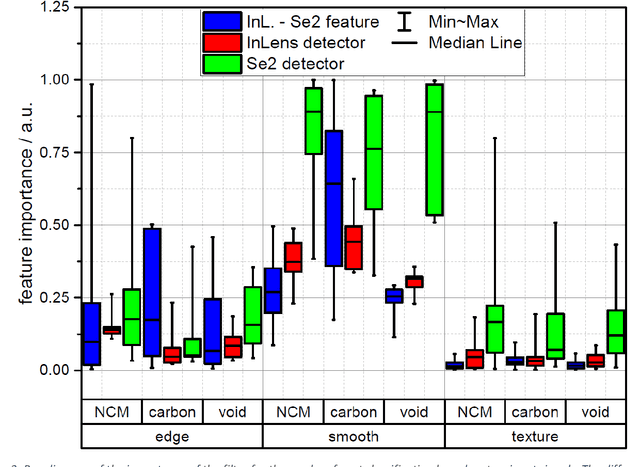
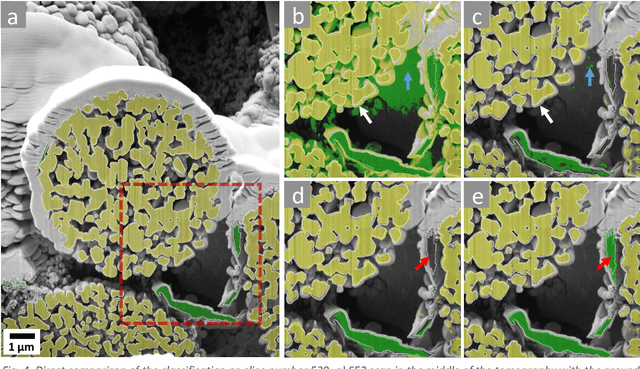
Abstract:FIB/SEM tomography represents an indispensable tool for the characterization of three-dimensional nanostructures in battery research and many other fields. However, contrast and 3D classification/reconstruction problems occur in many cases, which strongly limits the applicability of the technique especially on porous materials, like those used for electrode materials in batteries or fuel cells. Distinguishing the different components like active Li storage particles and carbon/binder materials is difficult and often prevents a reliable quantitative analysis of image data, or may even lead to wrong conclusions about structure-property relationships. In this contribution, we present a novel approach for data classification in three-dimensional image data obtained by FIB/SEM tomography and its applications to NMC battery electrode materials. We use two different image signals, namely the signal of the angled SE2 chamber detector and the Inlens detector signal, combine both signals and train a random forest, i.e. a particular machine learning algorithm. We demonstrate that this approach can overcome current limitations of existing techniques suitable for multi-phase measurements and that it allows for quantitative data reconstruction even where current state-of the art techniques fail, or demand for large training sets. This approach may yield as guideline for future research using FIB/SEM tomography.
Asymptotic properties of one-layer artificial neural networks with sparse connectivity
Dec 09, 2021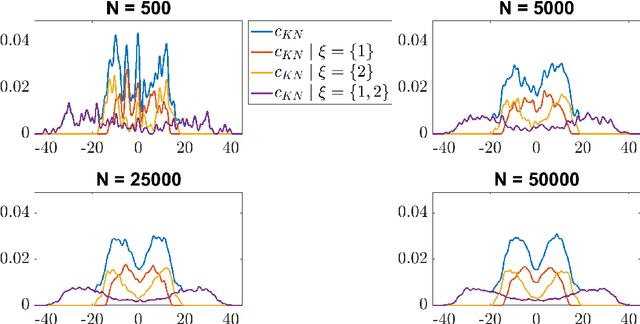

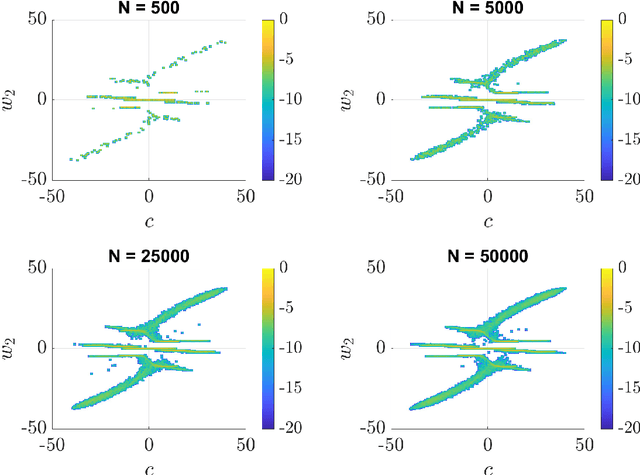
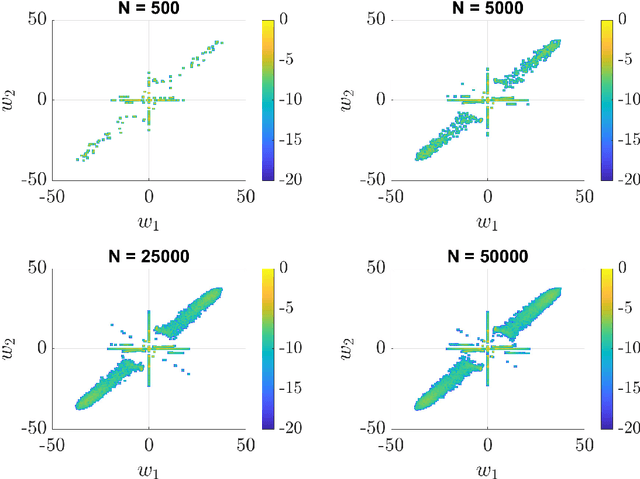
Abstract:A law of large numbers for the empirical distribution of parameters of a one-layer artificial neural networks with sparse connectivity is derived for a simultaneously increasing number of both, neurons and training iterations of the stochastic gradient descent.
 Add to Chrome
Add to Chrome Add to Firefox
Add to Firefox Add to Edge
Add to Edge